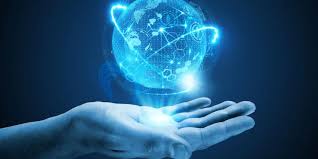Deep learning, a subfield of artificial intelligence (AI), has transformed many industries. Its core are artificial neural networks modeled after the human brain. These networks learn from massive data sets to accomplish complicated tasks like image recognition, speech translation, and time series forecasting.
In deep learning, CNNs and RNNs are the most used architectures. Both are powerful, but they excel at managing different data and solving various issues. This article examines CNNs and RNNs’ strengths, shortcomings, and best uses.
Unveiling CNN Secrets
Imagine a computer program that can discover, locate, and distinguish minor visual differences. CNNs are made for this amazing feat. CNNs, modeled after the visual cortex, excel in processing grid-like data like photos and videos.
The Power of Convolutions:
CNNs revolve around convolution. A filter—a tiny matrix of numbers—slides across the input image, multiplying element-wise with its elements. This method extracts image edges, forms, and colors. CNNs construct more complicated representations by layering convolutional layers, enabling object recognition.
Pooling for Efficiency:
Pooling is crucial to CNNs. Pooling layers downsample data while keeping key features. This boosts computational efficiency and helps the network focus on relevant data, decreasing overfitting.
Putting It Together:
CNNs have alternating convolutional and pooling layers followed by fully-connected layers like artificial neural networks. Final layers evaluate retrieved information and anticipate image content.
Where CNNs Shine:
CNNs dominate computer vision tasks. These applications benefit from their capacity to automatically learn image features:
- Image classification: Identifying cats, dogs, and airplanes in photos.
- Object detection and recognition: Detecting and recognizing certain things in an image, even with many objects.
- Image segmentation: Splitting an image into various sections, such as the foreground and background.
- Facial Recognition: Knowing people by their faces.
CNN limitations:
CNNs thrive with spatial data but struggle with sequential. They ignore data point order and context by treating each image separately. This renders them unsuitable for sequence-based applications like text or speech analysis.
RNN demystification
RNNs are built for sequential data, unlike CNNs. They excel at information order problems, making them ideal for language processing and time series forecasting.
Memory Power:
Internal memory distinguishes RNNs. RNNs can use previous inputs to influence current inputs, unlike one-way neural networks. This helps them understand sequence context and anticipate better.
Temporal unfolding:
RNN processing unfolds over time. Imagine an RNN processing a statement word-by-word. The network predicts the next word using the current word and previous words. RNNs may learn from past inputs, making them useful for:
- Machine translation: Machine translation preserves meaning and context while translating text between languages.
- Speech Recognition: Understanding sentence sounds and context to convert spoken language into writing.
- Text Generation: Analyzing word sequences in a vast corpus of text to generate poems, code, scripts, musical pieces, email, letters, etc.
- Time series forecasting: Stock prices and weather patterns can be predicted using time series forecasting.
Face the Challenges:
RNNs are beneficial for sequential data, but they have drawbacks. The vanishing gradient problem is difficult. Long-term dependencies are hard to learn since the network processes information and previous inputs fade away.
Addressing Vanishing Gradient:
Many RNN methods have been developed to solve the vanishing gradient problem. This includes:
- Long Short-Term Memory (LSTM) networks: LSTMs learn long-term dependencies by controlling information flow with unique gating mechanisms.
- GRUs, like LSTMs, are RNN architectures that alleviate the vanishing gradient problem. They are computationally more efficient than LSTMs due to their simpler structure.
RNN evolution:
Deep learning evolves, and RNNs do too. Bidirectional RNNs analyze data forward and backward, capturing context from both sides of a sequence. Transformers have also advanced natural language processing, pushing RNN applications.
Selecting the Right Tool
Data type matters when choosing CNNs or RNNs. A brief guide:
- CNNs are best for grid-like data (images, videos). They excel at computer vision because they learn characteristics from spatial relationships.
- RNNs are superior for sequential data (text, speech, time series). Internal memory lets them remember context and predict depending on information order.
Combining CNNs and RNNs can be beneficial. Videos are captioned using CNNs to grasp the visual material and RNNs to understand the sequential language.
The Future of Deep Learning
Deep learning architectures like CNNs and RNNs are powerful. We should expect more advanced models that can solve more complex problems as research proceeds. These innovations could transform healthcare, banking, transportation, and entertainment.
CNNs and RNNs are making substantial contributions in several intriguing areas:
CNNs identify and recognise objects, allowing self-driving cars to drive safely.
CNNs can discover abnormalities in X-rays and MRIs to help doctors diagnose diseases early.
Personal recommendations: RNNs may assess user activity to propose products, movies, and music that match preferences.
CNN and RNN applications are vast and expanding. As deep learning advances, these powerful technologies will revolutionize the future.



